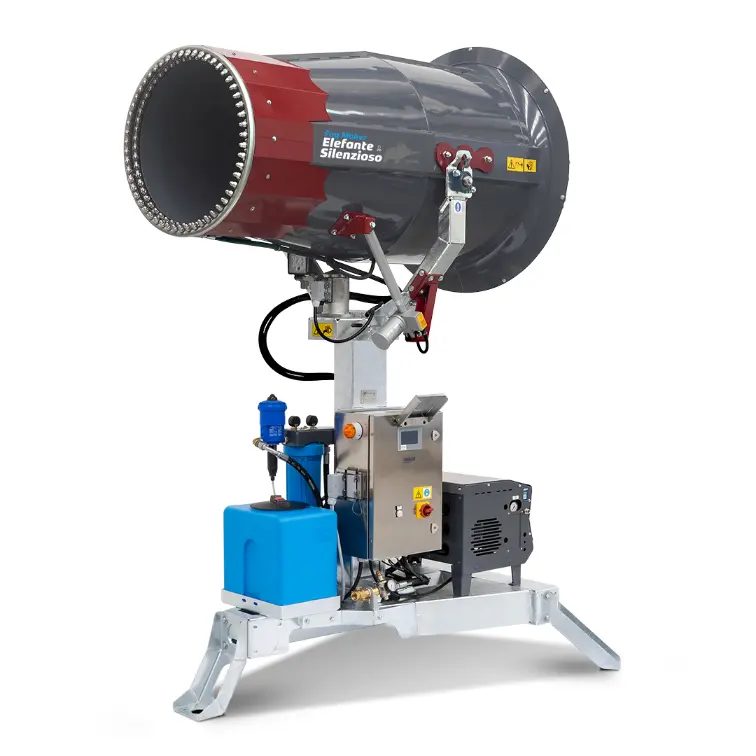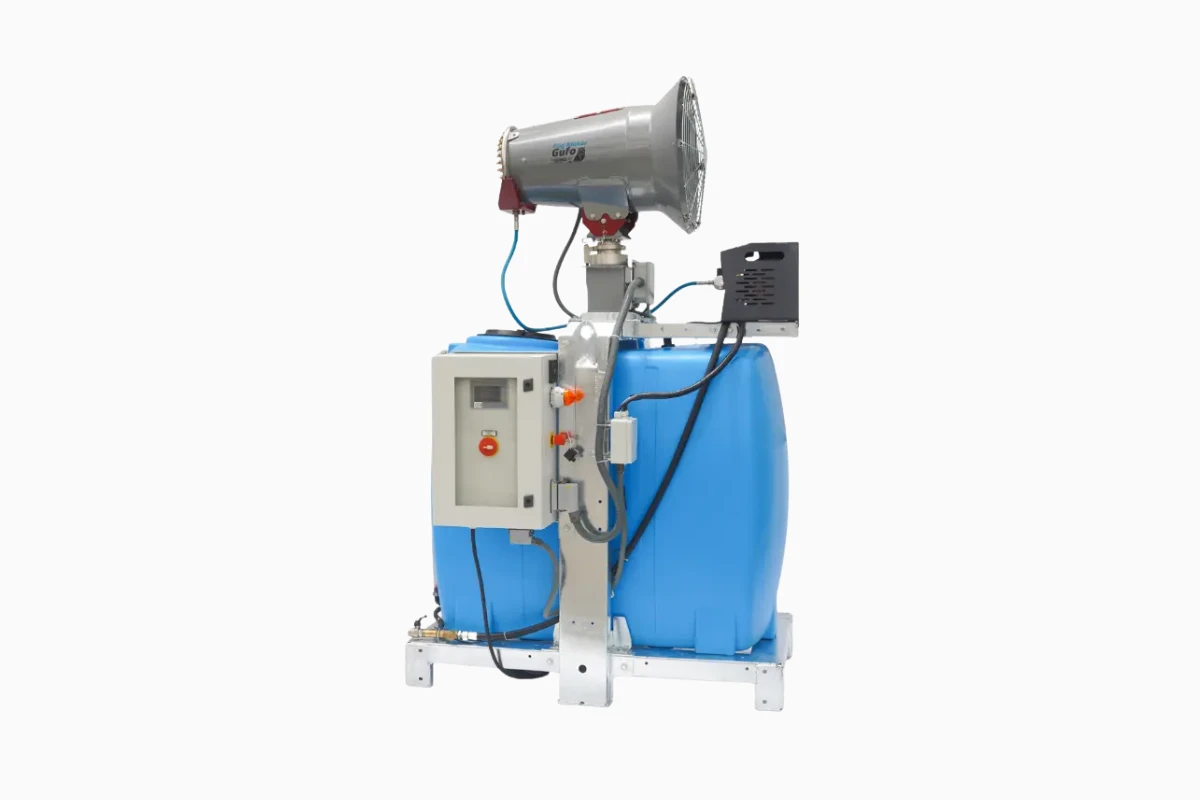A misting system uses water or air pressure to transform liquid into ultra-fine particles, creating a controlled mist. This process is used in various sectors, including industry, sanitation, and dust suppression. By reducing droplet size, the system enhances effectiveness in humidifying, cooling, or capturing airborne pollutants. Let’s discover how the misting system works.
Misting System Technologies
High-pressure misting
One of the most widely used methods is high-pressure misting, which uses specialized pumps to force water through calibrated nozzles. This system ensures:
- Ultra-fine water particles that evaporate quickly.
- Maximum efficiency in dust control and temperature reduction.
- Wide coverage thanks to the even distribution of mist.
Pneumatic misting
This technology uses compressed air to atomize water, generating a denser and more localized mist. It is often used in industrial environments where targeted control of humidity and particle emissions is required.
Applications of the misting system

Misting systems are used in multiple fields, including:
- Dust suppression: used in construction sites, quarries, and industries to reduce particulate emissions in the air. Dust suppression cannons are among the most effective solutions in this field.
- Sanitization and deodorization: used for disinfecting industrial and urban environments, effectively acting on bacteria and unpleasant odors.
- Environmental cooling: used in open spaces, events, and industrial environments to lower the temperature and improve comfort.
Adopting a misting system is an efficient and versatile solution for various operational needs, improving air quality and the working environment.

